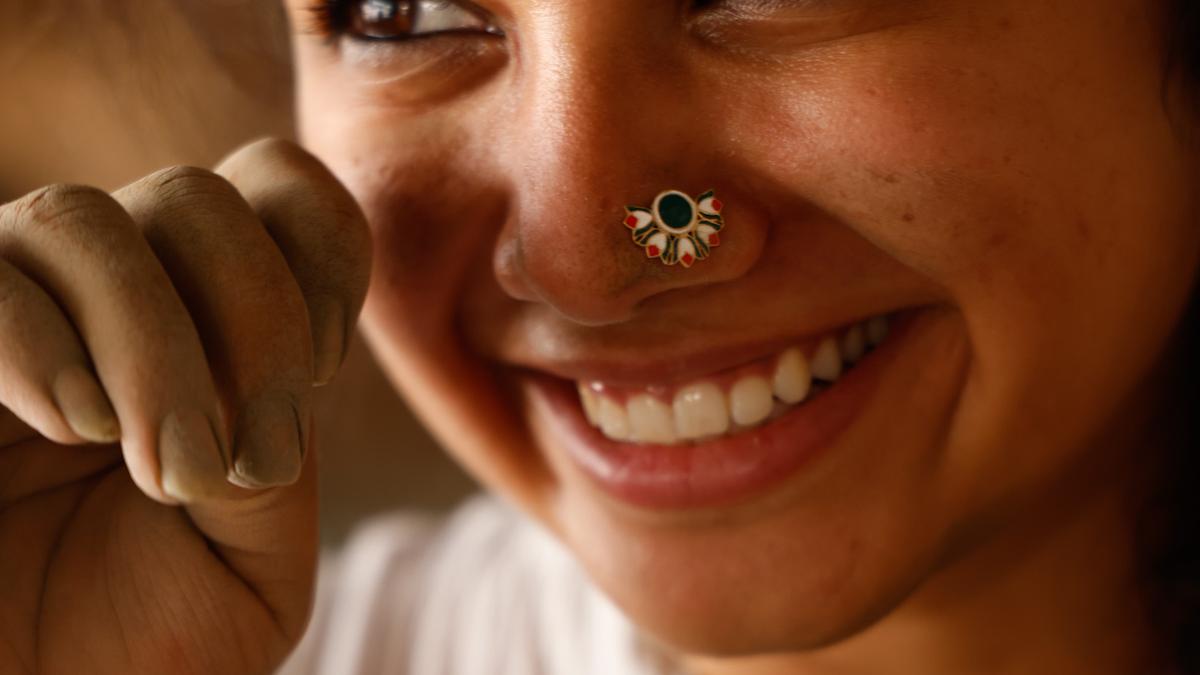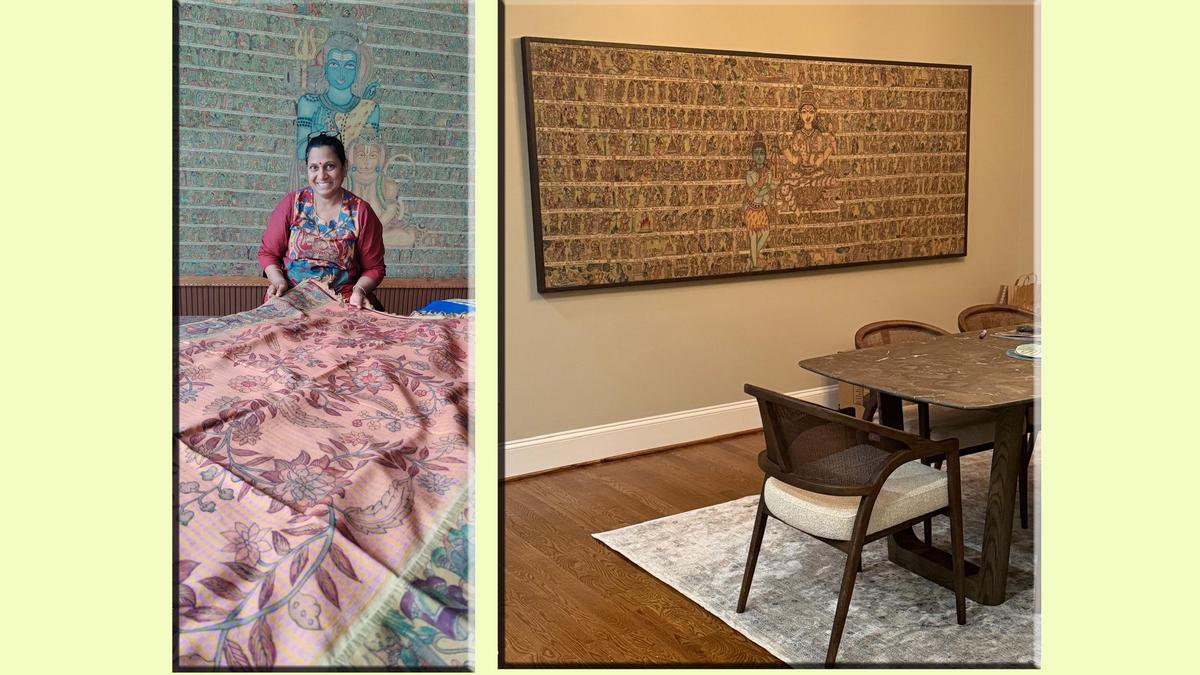As you wander the narrow lanes towards Ahilya Fort in Maheshwar, located around an hour and a half from Indore, countless shops beckon, their displays of “authentic” Maheshwari saris billowing outwards. Yet, beyond this spectacle lies a fascinating interplay between ancient tradition and the demands of a modern market.
Maheshwar, known in ancient times as Mahishmati and even mentioned in the 2nd-Century BC Arthashastra, has been a hub for exquisite textiles for over two millennia. However, it was Ahilyabai Holkar, queen of Indore from 1765 to 1795, who shaped the Maheshwari sari as we know it today. Around 1767, after establishing her capital here, she invited master weavers from regions like Surat and Malwa, including skilled Muslim artisans from Burhanpur. Together, they crafted the distinctive silk-cotton Maheshwari saris, renowned for their reversible borders, elegant stripes, checks, and motifs inspired by the Narmada river’s gentle flow or the majestic Ahilya Fort’s architecture.

Against the backdrop of Ahilya Fort | Photo Credit: Neville Sukhia
To honour Ahilyabai’s 300th birth anniversary (she was born on May 31, 1725), the Rehwa Society, founded in 1978 by Ahilyabai’s descendants, Richard (Shivajirao) and Sally Holkar, is working on a limited edition Maheshwari sari collection called Ahilya 300. Inspired by designs found in Holkar family portraiture as well as paintings by masters such as AX Trinidade and Raja Ravi Varma, the collection looks both backward and forward: backward to the roots of Maheshwari weaving, which in its early form used cotton with real gold zari, later evolving into a silk-cotton blend known as neem resham.
The capsule will feature 14 saris and a shalu (an ornamental dupatta), often worn by brides in Maharashtra and considered a part of traditional attire, each meticulously handwoven using traditional techniques. Older vibrant colours like the chutney green, the satallu or gulbasi pink, haldi yellow and chocolatey red browns have been used along with more contemporary colours in softer hues like biscuity beige or angoori teal blue and mints.
Of particular note is the Chandravati, a limited-edition piece inspired by a sari worn by maharani Chandravati Baisaheb of Indore. This beautiful cotton-silk, or “neem reshmi” piece features 111 lines of booti, handmade in 24-carat gold zari. Each sari takes over 100 hours to weave by the Rehwa Societymaster artisans, and shimmers with 2,109 golden ‘rui phool’ (a popular motif in the Western Deccan region, often used to line sari borders) bootis. What makes this special is that these pieces are being crafted in the very place that witnessed the inception of this art form. The planning for this collection began in March, and weaving commenced in early June, with an estimated completion time of two-and-a-half months. The collection is set to be unveiled on September 20 as an exhibition titled A Tribute in Thread at Gallery 47A in Mumbai’s heritage enclave, Kotachiwadi.
The art of pajni
What sets these saris apart technically is the use of an ultra-fine 80S cotton–silk warp, significantly finer than the more common 40s or 60s yarns found elsewhere. To imbue these delicate threads with remarkable strength, a traditional hand-sizing process known as pajni is employed. This intricate method involves brushing a cotton paste (often derived from rice or jowar) onto the yarn, which is then carefully stretched in the open air and tensioned with wooden sticks. Through this precise technique, a master weaver can transform 11 metres of warp into an impressive 44 metres of durable, supple yarn.

This painstaking process, which is not easily replicated, is key. It ensures that the finished sari drapes beautifully with a silk-like sheen while remaining wonderfully supple and durable, a stark contrast to fabrics made from untreated threads. The result is a lightweight “garbh resham” weave (intricate designs and motifs inspired by the architecture and art of Maheshwar), where the subtle cotton yarn harmonises with the luxurious silk, creating an elegant textile perfect for everyday wear.
The soul of this craft lies in the hands of its artisans. At Rehwa Society, you might encounter Tulsa Bai, a woman whose very presence embodies centuries of tradition. Draped in a simple, faded cotton sari, her frame may be stooped with age, but she moves with a quiet, measured grace. She hails from the Shali community, whose weaving roots stretch back to Burhanpur, a city in Madhya Pradesh – one of the very communities Ahilyabai invited to settle in Maheshwar.

Tulsa Bai at Rehwa Centre
No one can quite pinpoint Tulsa Bai’s exact age; she herself might suggest she is nearing a 100, shrugging off the number with the same ease she dismisses modern shortcuts. “As long as I can remember, I’ve been doing this,” she shares, her voice soft with memory. “It was passed down in my family.”
She visits the centre a few times a week, dedicating her time to teaching pajni. While her memory might occasionally wander, needing a gentle prompt for names or dates, her hands remain unerringly precise. She does not need glasses, even when inspecting the finest threads or assessing the consistency of the rice paste. She is, by all accounts, considered the last known master of pajni in its traditional Maheshwari form. As aRehwa weaver-in-training poignantly noted, “If we don’t learn it now, it might vanish with her.”

The intricate work on the saree
Yeshwant Holkar, Ahilyabai’s descendant and the current custodian of Ahilya Fort, beautifully articulates the vision behind this new collection. “We wanted this collection to carry not just the visual language of Maheshwari weaving, but the spirit of Ahilyabai herself — her quiet leadership, her inclusiveness, her deep understanding that the act of making something by hand is in itself a form of devotion.”
The special Ahilya sari collection will be exhibited at 47-A Gallery in Khotachiwadi, Mumbai from September 20 to September 28.

 12 hours ago
1
12 hours ago
1






















 English (US) ·
English (US) ·